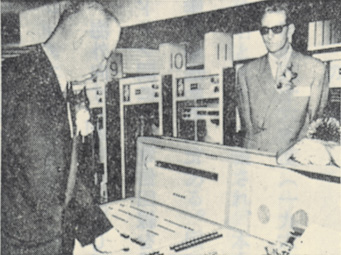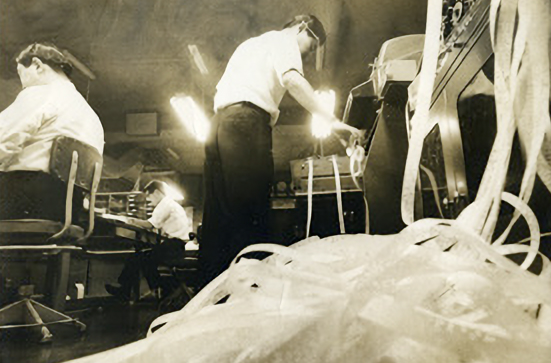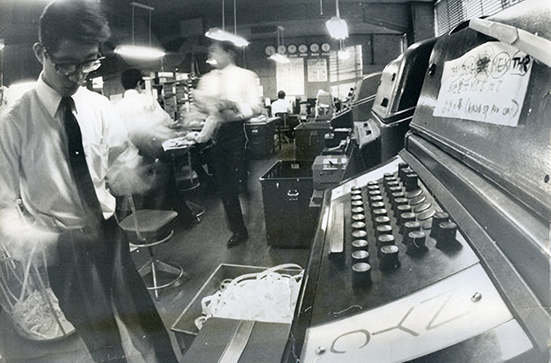Our Roots A history of rising to the challenge vol.5
Push to Modernize Management Systems Reflects Focus on Future Business Growth
Development of Data Processing Capabilities & Expansion of Telecommunications
We continue to look back on the tenure of President Kiyohiko Sho while highlighting the company's pioneering efforts to modernize management.

In 1963, Mitsubishi Shoji became the first Japanese company to record sales1 of 1 trillion yen. The scope of the company's operations had expanded dramatically, and at the same time, the number of employees rose sharply, from approximately 4,500 in 1960 to more than 7,700 in 1966. As a consequence, the volume of office work also ballooned. With its sights set on even further business expansion, the company resolved to move ahead with an unprecedented push to modernize management. This included efforts to improve the efficiency of office operations through the introduction of computers.
In those days, abacuses were still being used to perform calculations in the office. In fact, the ability to use an abacus was considered an essential skill for shosha professionals. Abacuses were given to new hires and abacus training was compulsory. Therefore, the transition to an Electronic Data Processing (EDP) system, which would uniformly handle everything from contracts and deliveries to payments, represented a huge leap. It took about two years to get the new system running, but after being brought on line in 1965, it contributed greatly to facilitating office work in the Steel Division, which had seen a tremendous expansion of its business. The know-how accumulated while introducing this system would later prove useful as the company further developed computer-based management platforms.
Meanwhile, there was also a need to improve communications. Around 1960, a dedicated telecommunications network linking offices in Japan was nearly completed. Communications with overseas offices were dependent on the infrastructure available in each country, but in 1962, the use of private dedicated lines between companies in Japan and the U.S. was approved and improvements in communications with other countries soon followed. In response to these developments, Mitsubishi Shoji actively moved ahead to expand telex2 facilities, including dedicated lines, with overseas offices and other locations, thereby supporting the growth of international business. The telex office at the head office in Tokyo gathered information from all over the world. With its numerous wall clocks showing the time in locations around the globe, the office was symbolic of the feverish pace of business during the days of Japan's economic miracle.
By promoting such forward-thinking policies, Mitsubishi Shoji proceeded to lay the foundation for further success.
- 1.Specifically "operating transactions"
- 2.When communicating via telex, messages were encoded on paper tape and then transmitted; on the receiving end, the messages would be reproduced in the form of paper tape before being rendered into text by another machine. Telex systems were an important means of communication that supported business during Japan's period of high economic growth.
-

The former Mitsubishi Shoji Building, which was a Marunouchi landmark -

The telex office at Mitsubishi Shoji's head office. Telexes were the primary means of business communication in those days and there were always mountains of paper tape bearing dispatches from around the globe. Photo courtesy of Norio Masuyama -

A typewriter-style telex machine
Photo courtesy of Norio Masuyama